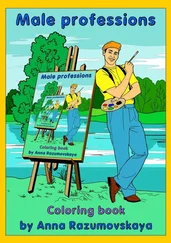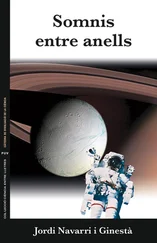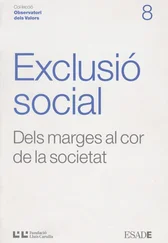3. Therefore, «entering a particular profession and professional community gives the professional a particular identity and generates a particular sense of belonging». In that sense, a profession is way for civil society to assert itself vis-à-vis political power, but it is also a way for public space to assert itself vis-à-vis other spaces, such as economic or religious space.20
4. Ultimately, Adela Cortina proposes a much more integrative definition: «A profession is a cooperative social activity, the internal goal of which is to provide society with a specific good that is indispensable for its survival as a human society, and which requires the joint efforts of the community of professionals who are identified as such in the eyes of society.»
It could not be expressed any better. Based on this contemporary and updated definition, although it is little known and disseminated, the meaning of a profession in our times can become clear, as well as its social relevance. A profession seeks to achieve a good or purpose; its mission is essential and decisive to social life; it is not expendable. Its practice requires the accumulation of knowledge and the cultivation of habits, skills or excellence on the part of the subject and the action being performed. Finally, professional activity is not an isolated individual activity but a communal, cooperative one, which gives it its own identity and character.
That said, there is something else that significantly defines the contemporary nature of the professions. For the Spanish philosophers Victoria Camps and Adela Cortina, pioneers in this reflection, there is no possible dichotomy between civic ethics and professional ethics, since «civic ethics are now the obligatory moral framework for professional ethics». Both authors argue that the content of these ethics are human rights, formulated during their historical development in the 20th century, and from which a set of fairly universal values have been derived, representing the substance of human rights: such as freedom, equality, tolerance, dialogue and solidarity. Moreover, it is worth recalling that in the «welfare state» of the past century some basic needs became civil rights, what are called «second-generation human rights».
Thus, we should be aware of and reveal the indisputable fact that the professions provide services with direct ties to first and second generation human rights, such as the right to education (teachers), to health (health professions, doctors), to housing or habitability (architects) or to justice (lawyers, judges), as well as to economic, environmental and cultural sustainability (engineers, economists) (third generation) and to the rights derived from the digital society (fourth generation). Without these services, human rights are unattainable. We must conclude, therefore, that in the 21st century, professional ethics demands that the professions provide their corresponding good or service, «because it is the path to making human rights a reality».21
From the outset and in parallel, as we mentioned in our discussion of Hippocrates and Cicero, the four principles have always accompanied professional practice: beneficence, autonomy, justice and non-maleficence. These principles can sometimes be contradictory. Thus, according to Augusto Hortal,22 the conflict between the principle of autonomy and that of beneficence is always resolved in favour of autonomy, but he considers the principle of non-maleficence (avoidance of harm) as the priority, even before the principle of autonomy.23
Regarding the validity and usefulness of these principles, it is worth noting, for example, that when the US Bioethics Commission was established, it adopted them for its operations. Similarly, the principles of the Jesuits’ so-called 2030 pedagogical revolution, which we will discuss later on, are oriented towards five closely related guiding principles: conscience, competence, compassion, commitment and creativity, which offer a remarkable and curious parallelism to the classical professional principles.
The Art of Professionals
Finally, in the discussion of the 20th century and the professions, it is impossible not to mention the great contributions of the American sociologist Richard Sennett and the American pedagogue and philosopher Donald Schön because of their importance and decisive influence.
At first sight, Sennett’s contribution24 could be described as heterodox, though unavoidable, and really very inspiring in terms of sparking reflection and encouraging a contemporary professional logic, in his case driven by private law, civil society and anthropology. This is why the influence of Sennett’s logic has taken root more easily in some professional environments than in others.
His approach does involve some retreats, avoiding the use of the word profession, a social and political word, more oriented towards public law. Sennett’s reflection is material and civil, anthropological. With his motto «Making is thinking», his contribution ultimately becomes a reference that might be considered «an antidote». Going to the root, it stands a protection and a defence of a job well done in the face of the risks and threats that professionalism is exposed to in today’s economy – both before and after the triumph of the markets, before and after digitalisation, and before and after the subsequent precarisation of labour. The craftsmanship we are offered today is not only associated with manual work; it is also a broad metaphor for professional practice. One can be a craftsman in technology, in medicine, in architecture, in law, etc. Richard Sennett’s craftsman is focused on «a job well done» – in our terms, on aretè, on excellence.
Of particular interest in Sennett’s work is the definition of a workshop: «A productive space in which people deal face-to-face with issues of authority. [...] No one working alone could figure out, however, how to glaze windows or to draw blood. In craftmanship there must be a superior who sets standards and who trains. In the workshop, inequalities of skill and experience become face-to-face issues.»
Workshops, in the past as well as the present, have been and are a factor in education and social cohesion by virtue of their working rituals, whether that means sharing a cup of tea, mentoring, informal workplace counselling, or the face-to-face sharing of information. As Donald Schön asserts,25 «learning all forms of professional artistry depends, at least in part, on conditions similar to those created in the studios and conservatories [...] with access to coaches who initiate students into the «’traditions of the calling’».
The two most relevant ideas in Sennett’s book are, on the one hand, the definition of craftsmanship as work driven by quality and, on the other, the peculiar notion of skill, broad and complex, that the author proposes. Regarding the former, Sennett explains the social dimension of the craft attitude, which generates honest and reliable citizens: «Learning to work well enables people to govern themselves and so become good citizens [...][;] good work molds good citizenship».
Crafts also comprise «material culture» and «tacit knowledge» as genuine assets of «social capital», i.e., knowledge and skills that are accumulated and passed on through social interaction, a real bodily know-how of which we are often not entirely aware. In the workshop, moreover, craftspeople have to cultivate social skills in order to coordinate with their peers, act as a team and respect the principle of authority. Sennett argues that «nearly anyone can become a good craftsman», with all the moral, social and aesthetic consequences that this entails.
Sennett also offers a wake-up call regarding what was an incipient digitisation and its limits. How is it possible to misuse such a useful tool? When CAD was introduced into architectural education to implement and complement hand drawing, a young architect at the Massachusetts Institute of Technology (MIT) observed that «When you draw a plot of land, when you put the contour lines and the trees on it, it sticks in your head. You get to know the place in a way that is impossible with the computer. You get to know a piece of land by drawing it over and over again, not by letting the computer ‘generate it for you’.» This is not nostalgia: this architect’s observation points to what we lose mentally when screen work replaces physical drawing – or, to borrow Juhanni Pallasmaa’s words, «the thinking hand». Like other visual practices, architectural sketches are often images of possibilities. In the process of rendering and refining these sketches by hand, designers are something like tennis players or musicians – i.e., they become deeply involved in the drawing, their thinking about it matures. The terrain «sticks in your head».
Читать дальше












